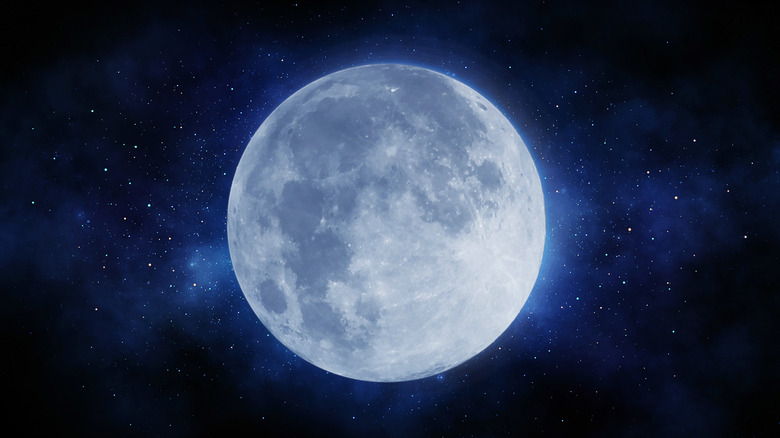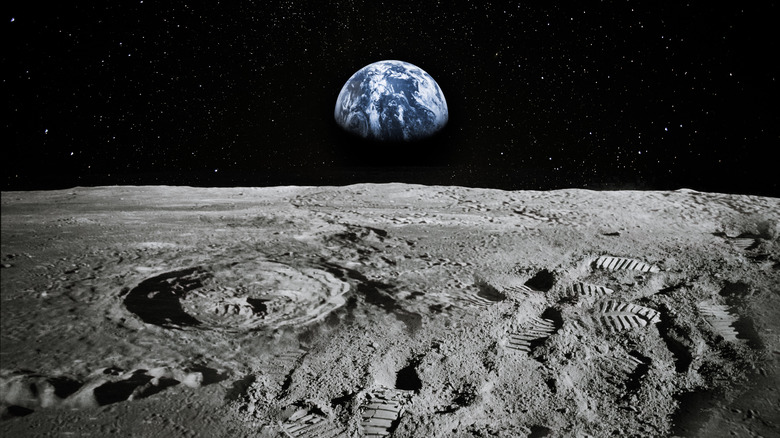The Real Reason The Moon Is Slowly Moving Away From The Earth
The Earth's moon, like most celestial bodies, is a constant in the lives of all inhabitants of our planet. Humankind has gazed up at the moon for thousands of years and will likely continue to do so for as long as we exist. But as constant as the moon seems to us, it's actually scooting away very slowly, like a person stuck in a conversation with a close-talker.
Much like wanting someone out of your personal space, the slow pulling away of the moon is perfectly natural. It's also been going on at different rates over billions of years, according to Business Insider, who reports today the moon is currently retreating from the Earth at about 1.5 inches a year.
The rate of so-called "lunar retreat" changes, and currently, it is happening at about the same rate as fingernails grow, as the BBC described it. At other times over the last billions and millions of years, the moon has pulled away as much as 8.2 inches a year, with its drift fluctuating anywhere from a tiny .05 inches to a whopping 10.9 inches in a year, per Business Insider.
The moon's retreat is directly related to the ocean tides
The moon and the Earth are inextricably connected even if they are separated by about 240,000 miles, according to NASA, who describes them as "tidally locked." That lock has to do with the moon's gravity pulling on ocean water, causing a "tidal bulge." That bulge in turn has its own gravitational pull and yanks right back on the moon, Business Insider explained.
Yet, the Earth spins faster than the moon, so the tidal bulge is always pulling on the moon, even as the moon's gravity slows the Earth's rotation. The friction caused by this gravitational relationship ultimately pushes the moon away. The BBC describes it as similar physics to how a merry-go-round works. The faster it goes, the more riders are pulled outward.
This gravitational tit-for-tat is essential to the Earth's livability. According to NASA, the moon helps moderate the Earth's climate and stabilizes its wobble. Another important effect the moon's proximity to the Earth has on the planet is that it influences the length of our day. For example, shortly after the moon formed, days were only five hours long. Time reported when the moon was a newbie, it was only 14,000 miles away.
It will be billions of years before lunar retreat will cause any more meaningful time changes on Earth. Fortunately getting away from that close-talker can probably be achieved in five or 10 minutes.

